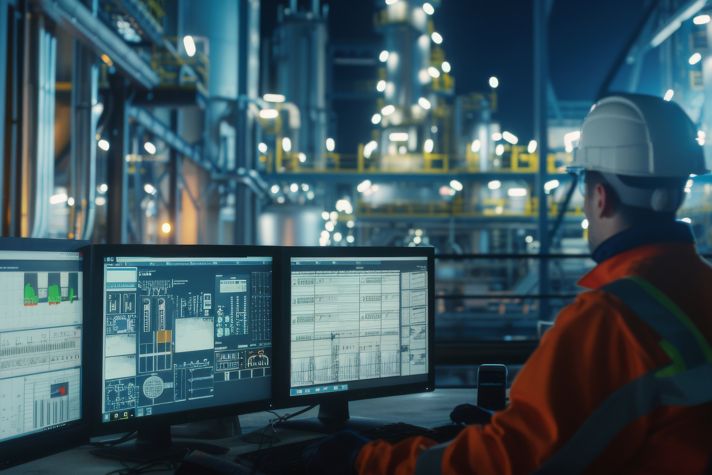-
Global
-
Africa
-
Asia Pacific
-
Europe
-
Latin America
-
Middle East
-
North America
- |
- BUSINESSES
- |
- Contact
- |
-
Global
-
Africa
-
Asia Pacific
-
Europe
-
Latin America
-
Middle East
-
North America
- |
- BUSINESSES
- |
- Contact
- |
You are browsing the product catalog for
You are viewing the overview and resources for
- News
- How Building Owners Can Drive Innovation and Reimagine Operational Efficiency
How Building Owners Can Drive Innovation and Reimagine Operational Efficiency
Leveraging smart technology to maximize efficiency, improve energy use and extend asset life in aging buildings
The average building today is aging rapidly, which poses a serious challenge to any efforts made toward operational efficiency. In the United States, more than 75% of commercial floor space was built before 1999[i] and in Europe, 76% of office buildings are at risk of obsolescence by the end of the decade[ii]. As buildings continue to age quickly, so do the assets inside, from HVAC systems to lighting to fire protection.
Every building owner and operator is faced with the same set of questions: How do you maximize the efficiency and value of an aging building and its assets? How do you improve the energy efficiency of a building? How do you extend the life of your critical assets while lowering maintenance costs? How do you create a safer and healthier environment for building occupants? And how do you move the needle on sustainability for your facilities?
Operational efficiency is critically important in all buildings. It impacts asset uptime, business continuity and maintenance. It ensures that building assets function at peak performance by minimizing adverse events – like power outages, equipment failures and safety incidents – that can lead to significant disruptions in business operations and even financial losses.
Operational efficiency mitigates risks by helping to ensure that critical systems function reliably so that owners and operators can reduce costs and extend the life of their assets.
Three steps to improve operational efficiency
Achieving operational efficiency is easier said than done. It’s a long journey that begins with three key steps:
- Visibility: Today, most building owners and operators find it challenging to understand what’s happening with their assets and how efficiently they’re performing. Most operators aren’t equipped with the time or resources to manually check machines or read through log reports and spreadsheets. The reality is that information about building assets is usually scattered throughout an organization with no efficient way to put the pieces together. Operators need one-click visibility that shows how their assets are performing and when servicing is required.
- Efficiency: To achieve efficiency, you first need to understand your asset performance and where there are gaps. Those gaps might be caused by the assets themselves or caused by poor operation and maintenance of your building. For example, if you keep all the windows in your home open in the middle of winter, the load on your HVAC system will spike to properly heat it. Well, it’s the same for a large building portfolio. To reach efficiency, you must find the gaps and anomalies in building operations and maintenance.
- Reliability: Once you achieve greater visibility and efficiency, you can address the reliability of your assets. The key to enhancing reliability is leveraging the power of predictive maintenance and monitoring. However, this can only be done by harnessing the data and analytics that building operators need to address and resolve issues remotely before they escalate. This can also help building operators avoid unnecessary costs. Reliability means your assets are available and up and running at the times you need them to be.
One solution to achieve better building performance
Building owners who want greater visibility, efficiency and reliability can accomplish this through digital transformation, which will lead to improved performance and sustainability of their buildings, assets, employees and visitors. So, how do they get to digital transformation?
It starts with Honeywell Forge for Buildings.
Here’s how it works:
Data Contextualization
Honeywell Forge for Buildings improves visibility by connecting existing buildings to the Honeywell platform, at which point data can be retrieved and understood through a process known as contextualization. In most buildings, systems were configured and permissions set up long ago – perhaps 10, 20, even 30 years ago – and asset names were listed in various formats leaving today’s users mystified.
Honeywell Forge for Buildings converts old naming conventions into formats that current users can readily understand. Contextualization explains the role of each asset within the building and helps illustrate the asset’s connections with and dependencies on other assets, such as air-handling units to chillers. This improved visibility via contextualization can help improve asset visibility and boosting performance within a building.
Analytics Rules
In terms of efficiency, Honeywell Forge for Buildings incorporates more than 300 analytics rules to enhance comfort, asset performance and reduce energy consumption, which have been designed based on insights gleaned from various customer engagements. These rules significantly enhance operational efficiency.
Consider a scenario where outside air is being brought into the building, but that air is extremely cold. Fresh air is needed for the occupants, but it can compromise building efficiency. By modeling and optimizing the airflow in a precise manner, Honeywell Forge for Buildings helps ensure that only the necessary amount of fresh air enters the building, optimizing efficiency without sacrificing indoor air quality.
Predictive Analytics
Lastly, Honeywell Forge for Buildings incorporates AI-powered predictive analytics that allows operators to anticipate potential failures before they happen and helps identify inefficiencies, such as assets running on auto, like a boiler valve. The solution can generate alerts, enabling users to take corrective action to optimize energy use and preemptively avoid unexpected failures.
The goal is to anticipate and address issues before they escalate into significant problems. By predicting asset failures ahead of time, the technology minimizes downtime, prevents costly repairs and optimizes the overall operational efficiency of the building, while the ability to identify inefficiencies can help extend asset lifecycle.
Most building operators are still in the early stages of their journey to operational efficiency, today, to reach their goal, they will have to embrace digitalization and automation. They will have to shift their mindset away from traditional methods and invest in new technologies. By taking the right proactive steps, operators can enhance safety and security, improve energy efficiencies and create a better building experience for everyone.
[i] U.S. Energy Information Administration, Commercial Buildings Energy Consumption Survey (CBECS), 2018 CBECS
Survey Data, December 2022 [Accessed January 2, 2024]
[ii] Cushman & Wakefield, Obsolescence = Opportunity: The next evolution of office space in Europe, March 2023 [Accessed January 2, 2024]
Copyright © 2025 Honeywell International Inc.




